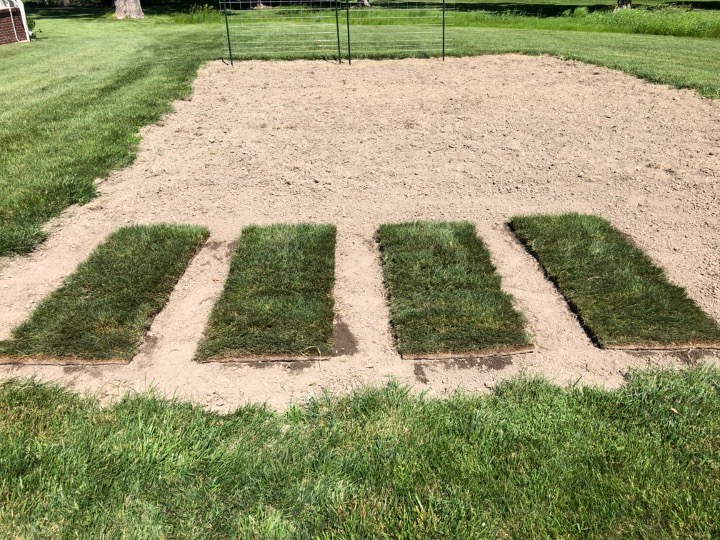Increasing the density and vigor of your field can make it less susceptible to weed pressure. Here are some ways to do that.
Choose the Right Fertilizer
Cool-Season Fertilizers
Some weeds that appear in the fall, including clover, appear when nitrogen levels are low. Using a fertilizer with high nitrogen content will boost seedling growth and establishment. It will also help turf recover from summer stress and strengthen it against weeds.
- 18-0-4 with XCU, AMS, Biosolids, and Armament has a substantial level of urea and ammoniacal nitrogen
- 21-0-0 Ammonium Sulfate helps turf establish quicker in cooler temperatures versus urea
- 22-3-11 with Armament contains ample potassium, which can enhance traffic tolerance, protect roots from frost, and strengthen cell walls
Warm-Season Fertilizers
Avoid applying granular fertilizers on warm-season fields in the fall, as they can burn the turf. A liquid product like Foliar-Pak 30-0-0 can provide much-needed nitrogen in slow-release form, without risking turf damage. Other products like Foliar-Pak 14-2-4 will deliver nitrogen, along with phosphorus and potassium.
Important Note: Some states and municipalities restrict the use of phosphorus unless you are seeding, so focus on nitrogen and potassium if you’re subject to these restrictions.
Cool- and Warm-Season Tips
For both cool-season and warm-season turf, schedule your final fertilizer application of the year for late summer or early fall. In addition to fertilizer, consider using a calcitic limestone product to correct pH if it is too low (less than 6.5) and use sulfur if it is too high and needs to be dropped to 6.5.
A comprehensive product like Foliar-Pak Grow-In can also help. Grow-In delivers the three main nutrients (nitrogen, phosphorus, and potassium), plus micronutrients and amino acids, which all work together to help increase density.
Choosing the right fertilizer doesn’t have to be a guessing game. A soil test can tell you your soil’s pH, nutrient levels, and more. ATS offers Foliar-Pak’s Soil Solver, which will help you home in on the right inputs.
Mow at the Proper Height
Most fields are mowed at between one and three inches, with baseball infields being on the low end and football fields on the higher end. No matter how your field is used, mow frequently and avoid removing more than one-third of the leaf blade per mow, since that can increase the field’s susceptibility to weeds and diseases.
Water Properly
The right amount of irrigation is key to keeping your field healthy. Cool-season grasses will require more water than warm-season grasses, and in-ground irrigation, sprinkler systems, or removable spray heads will provide ample water at the right intervals. Once the season is over, slightly tone down watering before winter arrives.
Consider using soil surfactants (also called wetting agents) to aid in infiltration and water retention in the fall; turf with deep, healthy roots will be less likely to suffer from drought stress and winterkill. Surfactants will help prevent your field from retaining too much (or holding too little) water.
An infiltration surfactant reduces surface tension, helping water reach the root zone, while a hydration surfactant holds water in the root zone, maintaining moisture and reducing turf stress. A product like HydroPak BioWet combines the strengths of both types of surfactants into one.
Clean-Up Herbicide Applications
Having a thick, dense stand may decrease the odds of weeds appearing, but that’s unlikely to keep them all away. Fall clean-up applications target any weeds left on your field. Since weeds have begun storing energy for the winter, making an application now while they are translocating carbohydrates down to their roots will kill them.
For fall applications, liquid products with multiple active ingredients, like Vessel 3-Way Herbicide, ArmorTech 4-Runner, and Defendor Specialty Herbicide, will provide the best control. Products containing carfentrazone, like Dismiss NXT, can also be especially effective in cool conditions. All four products can be used on cool- and warm-season grasses, but always check the label for your specific turfgrass type(s).
Make applications while average air temperatures are still above 50°F for several days. Also, ensure that the forecast is clear of rain and wind for 24 hours to give the weeds enough time to absorb the product. For weeds with a wax-like surface, a surfactant can help your application stick.
Pre-Emergent Herbicides for Winter Annuals
Winter annual weeds like annual bluegrass and henbit germinate in the fall, overwinter, and emerge in the spring. A pre-emergent herbicide application will prevent these weeds from becoming a problem in the new year.
Aim to apply your pre-emergent when soil temperatures average 70°F at two inches for several days, as this is when weed seeds will start to germinate. In warmer areas, a product like Specticle FLO, intended specifically for warm-season turf, can control dozens of difficult weeds like annual bluegrass. ArmorTech Kade 4L is another excellent pre-emergent option, controlling over 30 weeds on both cool- and warm-season fields.
Do not apply herbicides on stressed fields, as they can cause further damage. To avoid resistance, rotate your herbicides every year. No matter which product(s) you choose, always follow label instructions carefully and be mindful of overseeding guidelines.
For more cultural tips and product recommendations tailored to your region and field, reach out to your ATS rep. If you’re new to ATS, welcome! Use our find-a-rep tool to get connected.





